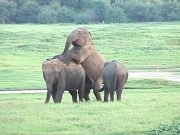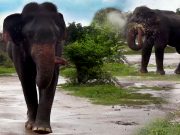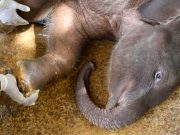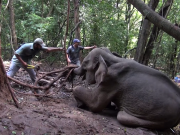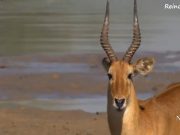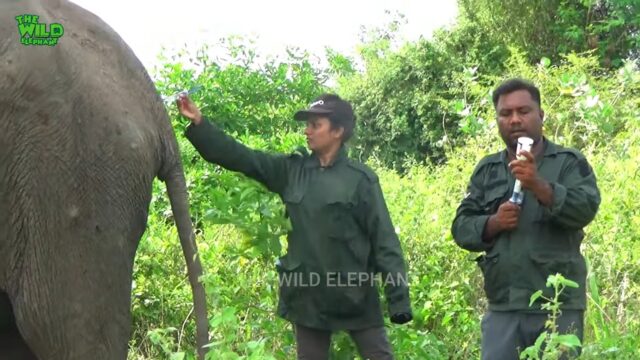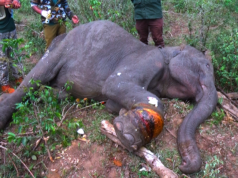In the wild, the struggle for survival is a daily battle, and for one particular elephant, this battle is made even more challenging due to blindness. This elephant, unable to see, faces significant hurdles in its quest for food, a vital component for its strength and health.
The Struggles of Blindness in the Wild
Elephants rely heavily on their senses to navigate their environment, find food, and interact with their herd. Vision is a crucial part of this sensory toolkit. For this blind elephant, the loss of sight means a constant struggle to locate the vegetation and water it needs. The lack of visual cues makes it challenging to move around safely and find the necessary sustenance to maintain its strength.
The Role of Wildlife Officials
Recognizing the dire situation, wildlife officials have stepped in to help. The elephant, already weakened from its inability to find enough food, required immediate attention. The officials initiated a treatment plan to address the elephant’s malnutrition and overall health. Their first step was to provide the elephant with nutritional supplements to compensate for the deficiency caused by its blindness.
The wildlife doctors decided to administer additional nutritional supplements to ensure the elephant received the essential nutrients it was missing. These supplements are designed to boost the elephant’s energy levels and overall health, providing it with the strength needed to survive in the wild despite its disability.
Treating a blind elephant is not a one-time effort. The wildlife officials understand that continuous care and monitoring are essential for the elephant’s survival. They are committed to providing ongoing support, ensuring that the elephant receives regular check-ups and nutritional supplements. This continuous care is crucial to helping the elephant regain its strength and adapt to its challenging circumstances.
This story of the blind elephant highlights a broader issue in wildlife conservation. It underscores the importance of compassionate intervention and the need for dedicated efforts to support animals facing unique challenges. The work of the wildlife officials not only aids this particular elephant but also sets an example of how humans can positively impact the lives of animals in distress.








